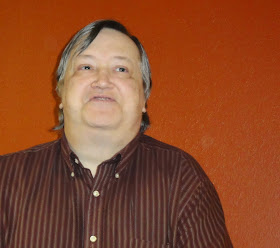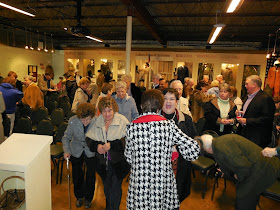2014 Night At The Museum Our German Heritage March 10th,
2014
The 41st “Night at the Museum” will take place Monday March 10th,
2014. This event will feature several guest
speakers, including Webster Parish Mr. John Agan, Mr. Otto Krouse, LeVerne Kidd
and Susie Lester. We will learn much
about Minden’s German heritage and influences that are still here
today. Most Mindenites have grown up
knowing that Minden has a sister city Minden, Germany and most are familiar with Germantown Colony. Many are not aware of what it was like to be
of German decent in the United States during WWII. This
subject will be the main feature of the talk.
The Germantown
Colony and Museum is an historical preservation project north of Minden.
It was among three sites in Louisiana
founded by former members of the Utopian Movement called the Harmony Society in
the early 19th century. The original colonists came from Germany having first
settled in Harmony, PA in 1803, then in New Harmony, IN in 1814, and finally in
1825 in Economy (now Ambridge, PA).
About
250 former members of the Harmony Society, many of whom left Economy, Pennsylvania,
during 1832, decided to leave because of disagreements over the society's
customs. They followed a visionary named Bernhard Muller, who called himself
"Count de Leon". The Count called upon all the heads of Europe
to relinquish their crowns in a "new world to come."
Some
community members would eventfully follow Müller and his family down the Ohio
River via flatboat. They later started up again at Grand Ecore,
twelve miles north of Natchitoches, Louisiana.
There Müller died and was interred in Natchitoches Parish. When the Count died,
a congressman obtained passage of a bill donating a tract of land to the
colonists and to Countess Leon, the Count's widow. The roots of the Germantown
Colony were hence established.
In
1835, the group, then led by Müller's widow, the Countess, settled seven miles
northeast of Minden in what was
then Claiborne Parish. For nearly four
decades, the colony operated on a communal basis until it dispersed in 1871,
when Webster Parish was created from Claiborne Parish. The Countess then moved
to Hot Springs, AR., where she died
in 1881.
The
colony and cemetery thereafter was maintained by members of the Krouse family,
including Dr. Francis Otto Krouse. In 1954, then Governor Robert F. Kennon
unveiled a still standing historical marker of the Germantown Colony. The sign
is located at the intersections of Broadway, Elm, and East and West streets,
across from the Webster Parish Library. Today the historic Germantown
Cemetery holds the remains of many
of the settlers. Tombstone
information reveals that a number were born in Germany.
In some cases, the cause of death is listed on the markers.
In
1973, Krouse descendants, including Chester Phillip Krouse (1899–1981) and his
sister, Ruby Florence Krouse (1906–2005), donated an acre of land to the
Webster Parish Police Jury. Three of the
original buildings, the Countess’ cabin, the kitchen-dining hall, and the Dr.
Goentgen cottage, survive at the site. The buildings contain items used by the
early settlers. Some of the original
wallpaper remains in the large room of the Countess' cottage, paper which she
had ordered from New Orleans to
cover the rough walls. A refined woman, the Countess gave piano instruction to
girls and young women in her cottage.
The Germantown
Museum did not open to the public
until May 10, 1975, with
then former Governor Kennon, a Webster Parish native and a descendant of Germantown
colonists, in attendance for the observation.
In 1979, the colony was placed on the list of the "Cultural
Resources Worthy of Preservation" by the United States Department of the
Interior. As Germantown,
the village was listed in 1979 on the National Register of Historic Places.
In
2008, the Louisiana State Legislature under Act 847 declared it appropriate for
the state to operate the Germantown Colony and Museum. On July
1, 2009, the museum switched from parish to state control. The Germantown
Colony Museum
temporarily closed on June 3, 2013,
for the construction of a new visitor’s center. The museum expects to reopen in
2014. The new visitor’s center will provide a climate-controlled area to
display artifacts used by the settlers. The renovation also includes restrooms
and new office space.
Don't miss your
chance to hear about some of Minden's earliest families. The museum events will be held in the
Media/Learning room at the Dorcheat
Historical Association Museum, 116
Pearl Street, Minden, La. Museum doors will open at 5:30 p.m., with first-come, first-serve seating. Program
begins at 6:00
p.m., admission is free with
potluck desserts and snacks welcome.
For more information contact Schelley Brown Francis at
318-377-3002 or visit www.museuminminden.blogspot.com
to sign up for the museum email blast. You can also find the museum on
Facebook. To learn more about Webster Parish's rich history visit the Dorcheat
Historical Association Museum located at 116 Pearl Street in Minden. Museum hours; closed on Monday, Tuesday-Friday 10 a.m. - 4 p.m. (closed from 1-2 for lunch), Saturday CLOSED. The museum
admission is free. Also open for special tours and rental by appointment.






































